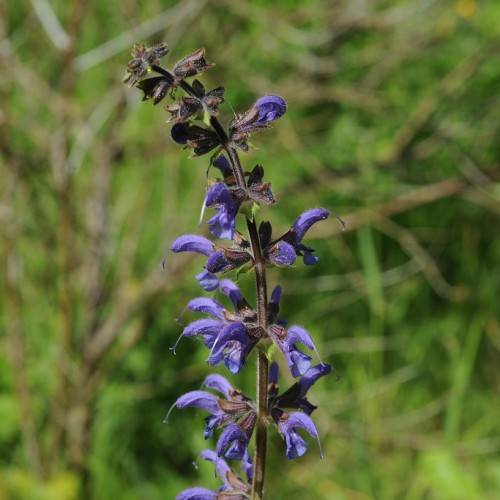
meadow sage
Salvia pratensis
Cycle:
Herbaceous Perennial
Watering:
Minimum
Hardiness Zone:
4 - 8
Flowers:
Flowers
Sun:
Full sun
Leaf:
Yes
Growth Rate:
Low
Maintenance:
Low
Drought Tolerant:
Yes
Care Level:
Medium
watering
Meadow Sage is a hearty plant species that requires moderate watering in order to thrive. Generally, it should be watered twice a week. Each watering should be approximately an inch of water, or enough to moisten the top 4-6 inches of soil. During hot summer months when temperatures are high, it should be watered more frequently, potentially 2-3 times a week. Additionally, during these months, it may need more water than an inch as the soil may evaporate more quickly. Conversely, during the cooler months, the plant should be watered less frequently. Once a week may be adequate. Change this watering frequency accordingly when the seasons change.
sunlight
Meadow sage (Salvia pratensis) grows best in full sun to partial shade. It prefers 6-8 hours of direct sunlight per day for optimal growth. During the hottest part of the day, shade from intense midday sun may be beneficial. The morning and late afternoon sun should still be experienced by the plant for healthy growth. Meadow sage prefers cooler temperatures and should not be exposed to direct sunlight for prolonged periods of time in warmer climates.
pruning
Meadow sage (Salvia pratensis) should be pruned in late spring or early summer after flowering has finished. Pruning isn’t essential to keep these plants looking neat and attractive, but can help encourage additional blossoms in the following year. When pruning, remove flowering stems down to the basal foliage or to the ground. Be sure to use clean, sharp hand pruners and discard of any pruned material after completing the task.
